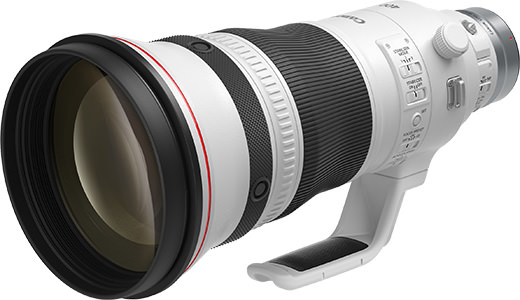- Specifications
- Block diagram
| Marketed | July 2021 |
| Original Price | Open price |
| Lens Construction (group) | 13 |
| Lens Construction (element) | 17 |
| No. of Diaphragm Blades | 9 |
| Minimum Aperture | 32 |
| Closest Focusing Distance (m) | 2.5 |
| Maximum Magnification (x) | 0.17 |
| Filter Diameter (mm) | 52 (Drop-in filter) |
| Maximum Diameter x Length (mm) | Approx. 163×367 |
| Weight (g) | Approx. 2,890 |
Like their predecessor models, the new high-image-quality and lighter-weight RF400mm F2.8 L IS USM features an optical configuration comprising 17 lens elements, including two fluorite lens elements and one Super UD lens1 element, in 13 groups. This design helps the lenses achieve reduced size and weight while correcting chromatic aberrations and realizing high resolution and high contrast. What’s more, newly employing Canon’s proprietary ASC (Air Sphere Coating), the lenses suppress ghosting and flare, which degrade image quality. And leveraging the benefits of their change to the RF mount, the lenses deliver optimal image stabilization (IS) of 5.5 stops2.
Thanks to optimization of the lens aperture drive control, the EOS R3 is capable of 30 fps (frames-per-second) of high-speed continuous shooting with AF/AE tracking when using the electronic shutter. In addition, when shooting video, aperture control can be configured by increments of 1/8 stops, enabling smooth transitions from environments where lighting changes, such as when capturing a subject moving from a dark area to a brighter location.
The lenses feature a special heat-blocking coating with a high reflection rate of infrared light, which partially comprises sunlight. This helps reduce temperature increases of the lens bodies while photographers are working outside under intense heat for long periods of time, such as during sporting events. What’s more, various parts of the lenses, including the mount, switches and focus ring, adopt dust and moisture resistant designs3, thus achieving the highest standards of performance and reliability worthy of designation as L (Luxury) lenses.
1 UD lenses incorporate lens elements made using UD (ultra-low dispersion) glass. Super UD lenses realize significant improvements in performance over UD lenses. Comprising two UD lenses, a super UD lens produces results with almost the same as the characteristics as fluorite.
2 When using the EOS R5 and EOS R. Based on CIPA standards. Yaw/Pitch direction.
3 Product designs take precautions to ensure dust and moisture resistance, but Canon cannot guarantee absolute protection from sand, dust, water and other materials.

Fluorite Lens Super UD Lens IS unit ASC


